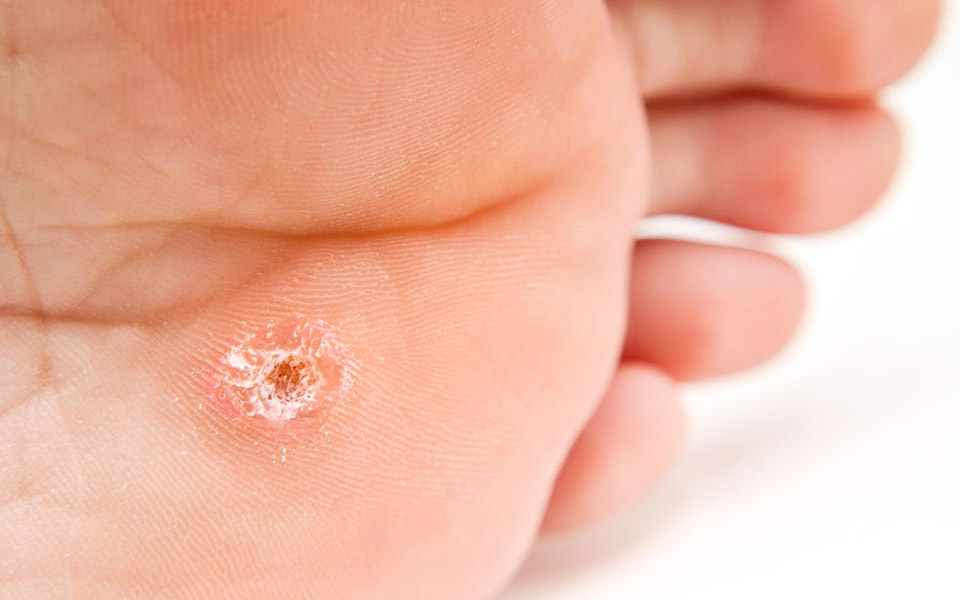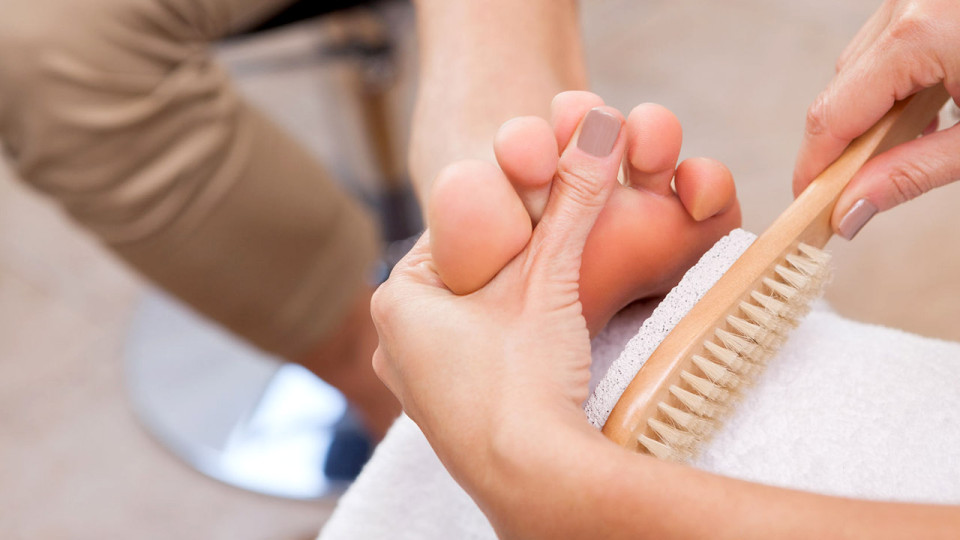As an experienced runner, you know that with your weekly deluge of kilometres comes a variety of foot problems. Whether you’re grumpily nursing another case of plantar fasciitis, or you’re mortified to step out this summer in sandals, your feet are proof that they take quite a beating. If you’re tired of the aesthetic effect running has on your feet, you shouldn’t fear. You can pretty those feet up in no time and prevent a slew of painful problems.
Dry Skin
You might think that with all of the sweating your feet do in a relatively small space that they would be baby soft. Let’s face it, though. When you’ve just done a brisk 10km before work, the last thing you care about is moisturising your feet. Not only are dry feet unsightly, they’re more prone to painful cracks that can make your runs downright unbearable, and they can even become infected. Nobody’s asking you to moisturise after every run, but experts do recommend applying a thick, creamy lotion to your feet after a bath or shower and before bed. Application post-shower will help seal any residual moisture in, and putting a pair of thick socks on after application of the lotion before bed will keep the moisture in overnight.
Sweaty Feet
If you don’t have overly dry feet, it’s possible they’re too sweaty. Pooling sweat in your shoes makes for easily chafed skin, and you’re already waging a constant battle against blisters as it is. Wet, warm shoes and socks are also prime environments for conditions like athlete’s foot. The first preventative step is to only wear moisture-wicking socks. Relegate those cotton socks to the back of the drawer and never speak of them again. Let your runners air out after every run too. Loosen the laces and pull the tongue down so the shoe is open and able to dry completely. This is especially important after rainy or snowy runs and will stave off any unpleasant odours.
Smelly Feet
Every serious runner has had a run in with smelly feet. When your feet are confined to tight, hot spaces, they’re going to sweat. With that moisture and warmth comes the perfect environment for bacteria (which smells) to grow. Foot hygiene is absolutely key. If you’ve started getting a whiff of something foul from your shoes, the worst thing you can do is not wash your feet after a run. You have to get all of that sweat and bacteria washed off to prevent odour from building up. It doesn’t matter if you’re heading back to work after a lunchtime run, wash your feet! Dry carefully between the toes, too!
If washing them isn’t quite cutting it, soak your feet (daily) in black tea. The tannic acid helps kill bacteria and curb smells. Boil two bags in a half litre of water for about 15min. Then dump in 2L of cold water and soak your feet for 30min.
Calluses
When your feet go through as much repetitive motion as they do, calluses are bound to build up. They can be good; building up the skin in the areas that are constantly rubbing against your shoes protects you from constantly getting blisters. But calluses that are especially thick or painful aren’t doing you any favours. When you go get a pedicure, tell your technician to take it easy on your calluses because some runners have complained of blistering when that protective layer of skin has been pumiced off. Experienced nail technicians will file off just enough of the callus to make it smooth without removing its protective effect.

Corns
More thickened skin! You might as well just grow hooves, right? Corns are simply areas of thickened skin that have become inflamed. In your case, you probably have them because of ill-fitting shoes. The pressure or friction from your trainer will form a layer of dead skin and create a corn, which is cone-shaped with a soft core that’s painful. You’re most likely to get them on your toes, and that’s because a lot of people don’t follow the “size up” rule when it comes to choosing running shoes. You can purchase corn cushions to alleviate the pressure from the middle of the area and allow it to heal. If it’s between your toes, keep your toes separated with some cotton until it’s healed. To soften the area, soak your feet in warm water and then file the area down.
Blackened or Lost Toenails
Oh, running. It does so much for you, but it also causes so many embarrassing issues! Chafed nipples and runner’s trots are just the beginning of running’s embarrassing side effects. It won’t take long for that embarrassment to make its way down to your toes. Distance runners are all too aware of the Black Toenail. It starts out as discomfort in one of your nails; nothing to write home about. Then before you know it, that flesh-coloured nail is looking a little…brackish. Before you can squeal “no!”, you’re taking your sock off after a training run and you’ve got a solitary black nail. Bullocks. What causes these little treasures? Your nail is rubbing constantly against your shoe and a blood blister forms under the nail. The blister can’t heal, so the pressure builds until the nail pops off. How can you prevent these? Make sure your shoes are least a half size bigger than you would normally wear.
Ingrown Toenails
If you’ve never had an ingrown toenail, consider yourself lucky. Toenails that aren’t properly and regularly trimmed are at a greater risk for growing into the soft and sensitive nail bed. The area will become inflamed and eventually it will become infected. If they become too infected, sometimes the only way to get it to heal is to have the entire nail removed by a doctor. Prevention is key. When you get pedicures, ensure the technician is taking care to cut the nail straight across. A curved shape encourages the end of the nail to grow into the bed instead of over it.
Blisters
Blisters are painful, nagging little buggers. Once one starts, it’s hard to keep it from growing unless you cut back on your running. This is where proper foot care definitely comes into play. No matter how thick the calluses are on your feet, if there’s enough repetitive rubbing, blisters can still form. Experts say that it’s critical to keep your calluses well managed in the event a blister does form. If a blister forms under a layer of thick, hardened skin, it’s going to be next to impossible to get to the blister and treat it properly.
Are you one of those people who seem to get a blister after any distance longer than 10km? You should consider taping the blister-prone areas prior to any of your longer runs. Spread something like Tincture of Benzoin over the fussy area and allow it to become tacky to the touch before taping it. It’s best to do this the night before your training run to allow the tape to conform to your feet.
To treat blisters, clean it with alcohol first, then drain it by cutting a small hole in it. Don’t use a pin to poke a hole because the blister can still refill with fluid. Put an antibiotic ointment over the blister, then place a layer of something like Second Skin before finally putting a layer of tape over it. Ensure the foot is completely dry before taping or the tape will come right off.

Care for your feet
Not every feet issue is preventable, but many of the more cosmetic issues can be prevented with a little care. Taking good care of your feet doesn’t necessarily have to be about wanting them to be attractive. Many of the things you’ll get in a pedicure (a massage, skin softening and proper nail trims) serve dual purposes: to make your feet yoga class worthy and to keep them in top shape for your training.




